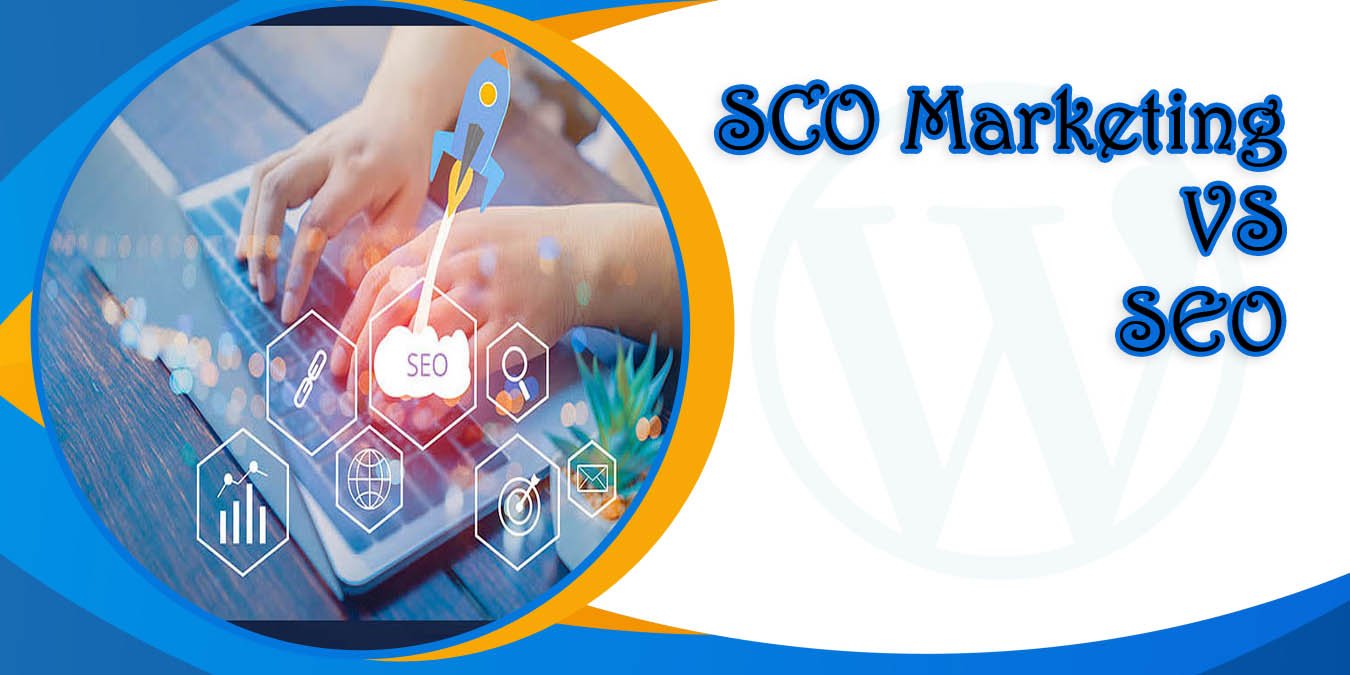Understanding SCO Marketing: How It Sets Itself Apart from SEO
In digital marketing, the acronym SCO can have multiple meanings depending on the context. Let me explain and disambiguate the different interpretations of SCO in marketing
Table of Contents
One meaning of SCO is Search Click Optimization.
This refers to the practice of optimizing paid search ads, such as those on Google Ads, to improve their click-through rate (CTR) and drive more clicks and traffic from search engine results pages (SERPs). Techniques used in Search Click Optimization include crafting compelling ad copy and calls-to-action, using relevant and high-performing keywords, testing different ad extensions, and optimizing ad scheduling and targeting settings. The goal of Search Click Optimization is to maximize the effectiveness and return on investment (ROI) of paid search campaigns.
Another interpretation of SCO is Search Content Optimization.
This involves optimizing website content to improve its visibility and rankings in organic (non-paid) search engine results. Search Content Optimization strategies include conducting keyword research and targeting relevant search terms, optimizing on-page elements like titles, headings, and body copy, creating high-quality and valuable content, building an internal linking structure and site architecture, and earning high-quality backlinks from other authoritative sites. The objective of Search Content Optimization is to increase organic search traffic by creating content that aligns with user search intent and follows best SEO practices.
Thank you for providing that detailed explanation. I understand now that in marketing, SCO is an acronym that stands for three different but related concepts: Search Channel Optimization (SCO) This refers to the process of tailoring your website’s SEO strategies and content to rank well across different search engines like Google, Bing, etc. It involves adapting your SEO techniques and content to align with each search engine’s algorithm and ranking factors.
This means optimizing your content and social media presence to effectively leverage and maximize your brand’s reach on different social channels like Facebook, Twitter, Instagram, etc. It involves customizing your content, tone, and strategies for the unique audiences and best practices of each social platform. Sales Cycle Optimization (SCO) This approach analyzes the customer journey and behavior towards your brand in order to serve the right content and messaging at each touchpoint across the sales funnel.
It aims to optimize content and communication to guide prospects through awareness, consideration, and purchase stages effectively. So in essence, SCO in marketing encompasses optimizing your content and strategies across search engines, social media channels, and the entire customer sales cycle for maximum visibility, engagement, and conversions. Thank you for clarifying the three distinct but interconnected meanings of this acronym in the marketing context.
SCO Marketing VS SEO

What is Search Engine Optimisation (SEO)?
SCO Search Engine Optimization
Search Engine Market Share Statistics
While Google dominates the global search market with a staggering 86.99% share as of 2024, it’s important to recognize the significant user bases of other major search engines. Bing, for instance, is utilized by approximately 7.73% of internet users worldwide. Yandex was the leading search engine in Russia from October to December 2023, having accounted for around 63.8 percent of total user visits over that period. Baidu in theChinese digital landscape. It owns nearly 70% of the market share in 2023 Many SEO experts argue that optimizing solely for Google is sufficient.
However, this stance overlooks the potential opportunities that exist in tailoring your website’s search channel optimization (SCO) efforts to rank well across multiple search engines, depending on your product or service offerings and target markets. At its core, the goal of Search Engine Optimization (SEO) is to enhance your website’s visibility and achieve higher rankings in search engine results pages (SERPs), ultimately driving increased organic traffic. To accomplish this, it’s crucial to implement effective SEO practices that make your website more search engine-friendly. Some of the most impactful SEO practices include compressing images for faster load times, strategically utilizing keywords in title tags and meta descriptions, ensuring a responsive web design for optimal mobile experiences, and cultivating a robust backlink profile.
These techniques facilitate easier crawling and indexing of your website by search engine bots, positively influencing your rankings. It’s imperative to note that SEO differs from Social Channel Optimization (SCO) in terms of objectives and methodologies. While SEO focuses on improving organic search visibility and traffic, SCO concentrates on optimizing your brand’s presence and engagement across various social media platforms.
Differences Between SEO and SCO Marketing
SEO and SCO marketing are two different strategies that businesses use to increase their online visibility. SEO stands for Search Engine Optimization, and it involves optimizing a website so that it ranks higher in search engine results. On the other hand, SCO marketing, which stands for Social Channel Optimization, focuses on optimizing and distributing content on social media platforms.
The primary goal of SCO marketing is to ensure that potential customers can see, know, and hear about a business on popular social media networks like Facebook and LinkedIn. It is more specific than SEO because it prioritizes finding the right social media channels and platforms where a business’s target customers are most likely to discover and engage with the brand.
While SEO aims to improve a website’s visibility in search engine results, SCO marketing is all about increasing a business’s presence and engagement on social media platforms. The two strategies are quite different from each other, as highlighted in the comparison table provided.
To better understand the distinctions between SEO and SCO marketing, let’s imagine a clothing retailer wants to increase their online presence. For SEO, they would optimize their website by using relevant keywords, improving page load times, and creating high-quality content to rank higher in search engine results when people search for terms related to their products. On the other hand, for SCO marketing, they would focus on creating engaging social media content, running targeted ad campaigns, and interacting with their audience on platforms like Instagram and TikTok, where their target customers are most active.
SEO focuses on optimizing a website to rank higher in search engine results. It targets search engines like Google by using relevant keywords and building backlinks from other sites. SEO takes longer to show results because improving search rankings is a gradual process. It requires technical knowledge about how search engines work. Overall, SEO is a long-term strategy for increasing online visibility.
On the other hand, SCO involves optimizing and distributing content on social media platforms. It targets popular social channels like Facebook and Instagram where a company’s potential customers are active. SCO emphasizes creating engaging content that encourages shares and interactions from followers. Compared to SEO, SCO can deliver quicker results in terms of boosting social media presence and engagement. However, it requires knowledge about effective social media marketing tactics. SCO is generally considered a short-term strategy for increasing visibility.
Both SEO and SCO are effective approaches for improving a business’s online visibility, but they have different core focuses and goals. Understanding the distinctions between these two strategies can help a company determine which one aligns better with their specific objectives and resources.
SCO Vs. SEO: How Are They Different?
SCO and SEO are quite different. SEO concentrates on optimizing a website for search engines. It aims for high rankings and visibility, in order to get more organic traffic to your or your client’s website. SCO deals with optimizing any type of online content to fit your target audience and lead to customer acquisition. SEO is an integral part of SCO. However, as online promotion techniques increase and expand, many terms and practices blend with one another. At the same time, new, specialized areas are formed, and new jargon comes up.
So, you will often hear different professionals referring to the same things with different names, or vice versa. In any case, SCO, as in search channel optimization, means tailoring your SEO practices to rank high in every search engine individually, not just Google. SCO Marketing and SEO are two important digital marketing strategies that can help businesses increase their online visibility and reach more customers online. While both strategies aim to optimize content for search engines, there are some key differences between them. SEO refers to the process of optimizing a website for search engines such as Google, Bing, and Yahoo.
Search engine optimization involves improving a website’s content, structure, and technical aspects to improve its positioning in search engine results pages (SERPs). For businesses that want organic traffic, SEO is a complex and time-consuming process. With SCO, you can optimize content for specific search channels, such as social media platforms and search engines. It involves creating and distributing high-quality content that is relevant to the target audience, shares well, and links well. SCO can help businesses increase their brand awareness, generate leads, and drive website traffic.
When it comes to SEO and SCO marketing, which one will you need?
Digital marketing heavily utilizes SEO to improve a website’s search engine rankings, while SCO helps generate leads and expand reach across various social media channels. Building relationships on social media is essential for a successful SCO marketing campaign to reach a larger audience. Combining SEO and SCO efforts can further increase the chances of success. Additionally, implementing an omnichannel marketing strategy allows businesses to interact with consumers on multiple platforms (website, mobile app, physical store, etc.) and fulfill their needs through various means, expanding discovery and engagement opportunities. It’s important to note that SCO can also impact SEO.
For example, a user’s search query on Google and an SCO marketing campaign on Twitter can both appear on the same search engine results page (SERP). However, it’s worthwhile to differentiate between the specific concepts of social channel optimization, search channel optimization, and sales cycle optimization. While the former aims to boost campaigns’ ranking and visibility on SERPs, the latter helps businesses communicate more effectively with their target audience throughout the sales cycle. Your explanation highlights the interconnected nature of SEO, SCO, and omnichannel strategies in modern digital marketing. It emphasizes the importance of leveraging these approaches cohesively to improve search visibility, generate leads, build relationships, and communicate effectively with customers across various touchpoints.
SCO In Digital Marketing
Social Channel Optimization (SCO) in digital marketing refers to the process of optimizing and distributing website content across various social media channels. The primary goal of SCO is to increase a website’s visibility and reach on popular social networking platforms such as Facebook, Instagram, Twitter, and TikTok.
SCO marketing complements and supports Search Engine Optimization (SEO) efforts by helping websites rank higher on search engines like Google while simultaneously expanding their customer outreach. A practical example of this approach is leveraging social media networks like Facebook and LinkedIn to promote a business.
By actively engaging on these channels, businesses can effectively reach two distinct types of audiences: consumers and other businesses. Facebook is particularly well-suited for connecting with consumers, while LinkedIn is more effective for reaching and engaging with other businesses and professionals.
Connecting with both consumer and business audiences through social media can help a company establish its relevance more efficiently within its industry. Consistent activity and valuable content on these platforms can position a business as a leader in its field, build trust, and ultimately attract more customers or clients.
In summary, Social Channel Optimization in digital marketing involves strategically optimizing and distributing website content on popular social media channels. This approach complements SEO by boosting online visibility, expanding customer outreach, and enabling businesses to connect with both consumer and business audiences effectively, ultimately helping to drive more traffic, leads, and sales.
Social Channel Optimization is a crucial tool in digital marketing. It helps businesses get their message across and spread awareness to potential prospects through social channels. However, it’s important to remember that different social platforms have varying standards and popularity levels across countries. For example, platforms like Google Maps and YouTube do not operate in certain countries like China, Crimea, Iran, Cuba, North Korea, Syria, and more.
Once a business identifies its top social platforms and optimizes its social profiles, it needs to start posting content tailored to its target audience. The most important rule is to serve content that resonates with the audience, using the right format at the right time. Here are some tips for Social Channel Optimization marketing on popular platforms like TikTok, Facebook, and Twitter:
TikTok Content Optimization:
- Videos must immediately capture the user’s attention to engage them within 1 second.
- Use eye-catching captions with inviting phrases, such as “This is what happens when…” or “This is why I love…”
- Only post high-quality videos, as they reflect the brand’s quality.
Facebook Content Optimization:
- Every post should include a visual element.
- Activate and widely utilize the reviews feature on the business page.
- Long posts (over 80 words) tend to perform better and encourage more engagement.
Twitter Content Optimization:
- Short tweets, ideally up to 110 characters, work best.
- Incorporate quotes, statistics, charts, and polls to boost engagement.
- Occasionally include photos and videos to increase retweets.
By offering content that aligns with what the audience wants to see, businesses can create memorable branding. This approach increases the number of prospects and helps them transition more quickly and easily into the consideration stage. After the consideration stage, it’s essential to optimize the selling cycle.
Check Out Top 30 Best and Most Popular WordPress blogs to read in 2024
F.A.Q – SCO Marketing VS SEO
Q. What does SCO mean in marketing?
SCO in marketing refers to Social Channel Optimization. It’s a strategy within digital marketing that concentrates on enhancing content specifically for social media platforms. The objective of SCO is to enhance a website’s visibility and engagement on social media, leading to increased brand awareness, lead generation, and website traffic.
Q. How does SCO differ from digital marketing?
SCO and digital marketing are not synonymous. While digital marketing encompasses various strategies like SEO, social media marketing, email marketing, and content marketing, SCO is a narrower focus within digital marketing, specifically targeting social media platforms.
Q. How does SCO function?
SCO employs several tactics, such as:
- Crafting high-quality content tailored to the target audience on social media, including blog posts, infographics, videos, or images.
- Utilizing relevant keywords and hashtags to aid users in discovering your content on social media platforms.
- Promoting social media content across other websites and platforms.
- Engaging with followers on social media by responding to their comments.
By adhering to these best practices, you can enhance your social media presence and extend your reach to a broader audience.
Q. What are the benefits of SCO?
SCO offers several advantages for businesses, including:
- Enhanced brand visibility and recognition on social media platforms.
- Increased engagement with target audiences, leading to higher conversion rates.
- Improved website traffic and lead generation through social media channels.
- Better understanding of customer preferences and behaviors through social media analytics.
- Cost-effective marketing strategy compared to traditional advertising methods.
Q. How can businesses measure the success of SCO efforts?
Businesses can gauge the effectiveness of their SCO initiatives through various metrics, including:
- Social media engagement metrics such as likes, shares, comments, and follows.
- Website traffic generated from social media referrals.
- Conversion rates for social media leads.
- Growth in social media followers and brand mentions.
- Return on investment (ROI) from social media marketing campaigns.
Bottom line -SCO Marketing VS SEO
To achieve success in SEO and SCO marketing, careful planning and precise execution are essential. Partnering with us can greatly enhance your digital marketing campaigns. Our agency specializes in crafting compelling strategies tailored to your business needs. Contact us through our website to explore how we can elevate your online presence with SEO, SCO, and a range of other digital marketing services.
Originally posted 2024-05-02 10:18:30.







